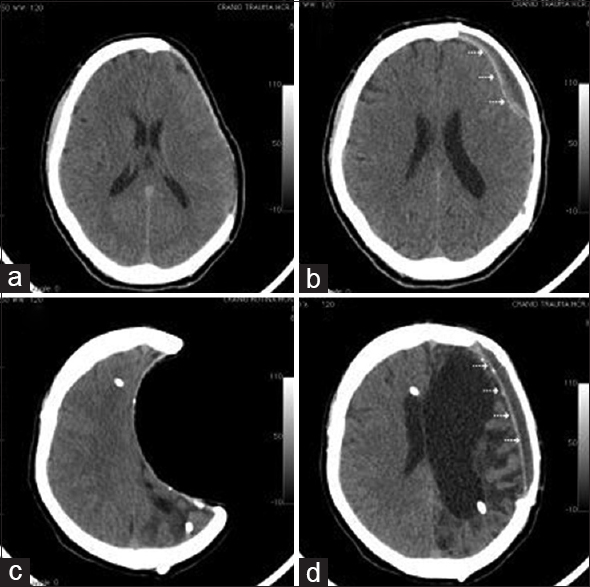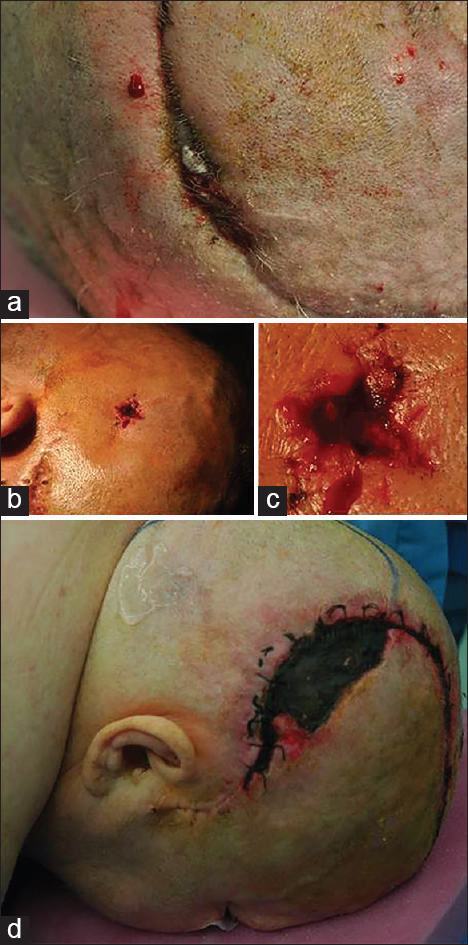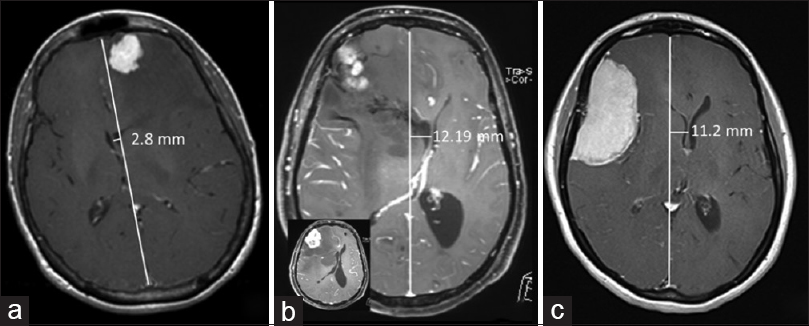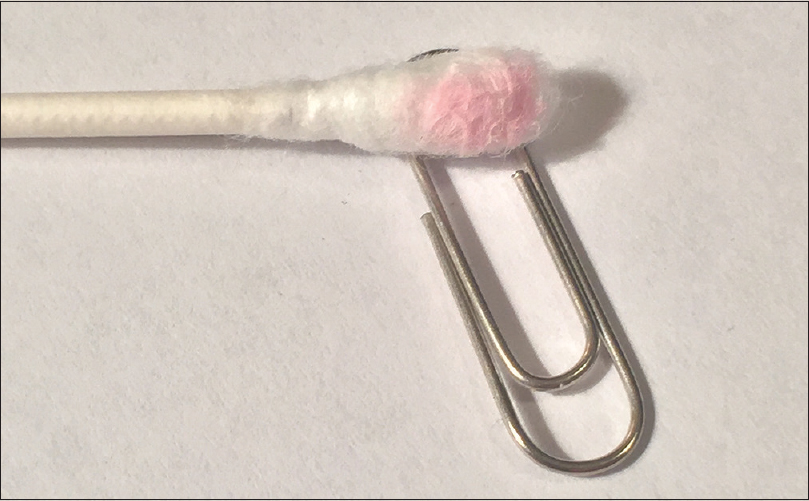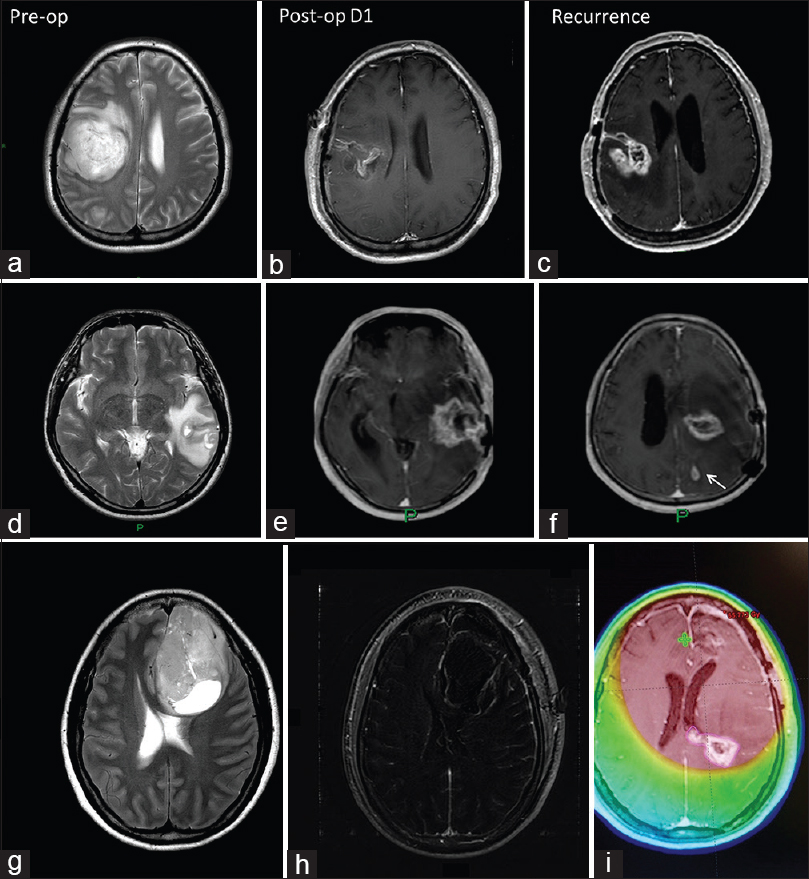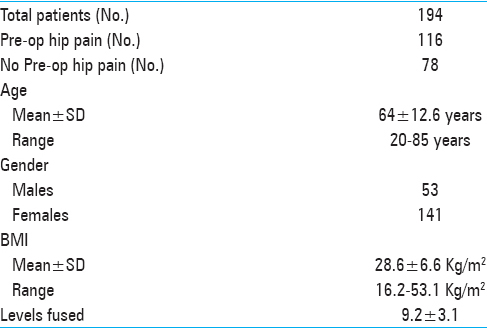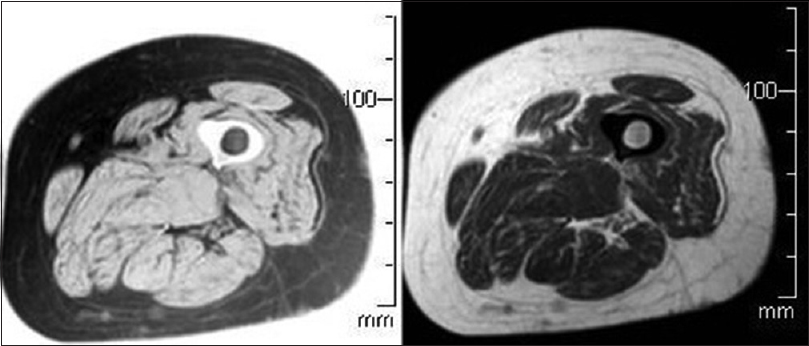Polymethylmethacrylate imbedded with antibiotics cranioplasty: An infection solution for moderate and large defects reconstruction?
Date of publication: 09-Nov-2016
Background:In cases where autologous bone graft reconstruction is not possible (such as comminuted fractures, bone graft reabsorption, or infection) and the use of synthetic material is required, polymethylmethacrylate (PMMA) use is a safe and efficient solution. Studies comparing the incidence of postoperative complications between autologous and synthetic cranioplasty are heterogeneous, not allowing a conclusion of which is the best material for skull defects reconstruction. Current medical literature lacks prospective well-delineated studies with long-term follow-up that analyze the impact of antibiotic use in PMMA cranial reconstruction of moderate and large defects.
Skin flap complications after decompressive craniectomy and cranioplasty: Proposal of classification and treatment options
Date of publication: 09-Nov-2016
Background:The list of complications reported after decompressive craniectomy (DC) and cranioplasty is progressively increasing. Nonetheless, the exact incidence of these events is still ill-defined. Problems affecting skin flaps after DC and cranioplasty have never been accurately analyzed in papers and their impact on patients’ prognosis is largely underestimated.
Emergency decompressive craniectomy after removal of convexity meningiomas
Date of publication: 26-Oct-2016
Background:Convexity meningiomas are benign brain tumors that are amenable to complete surgical resection and are associated with a low complication rate. The aim of this study was to identify factors that result in acute postoperative neurological worsening after the removal of convexity meningiomas.
Nickel release and surveying in surgical clip alopecia
Date of publication: 26-Oct-2016
Pattern of recurrence and factors associated with cerebrospinal fluid dissemination of glioblastoma in Chinese patients
Date of publication: 20-Oct-2016
Background:Pattern of recurrence of glioblastoma (GBM) seems to have undergone some shifts from distant metastasis as a rarity to a higher proportion, including disease disseminated via cerebrospinal fluid (CSF) pathway. There is still no report on the pattern of recurrence for Chinese population. Here, we evaluated the pattern of recurrence of GBM in Chinese patients along with factors that could affect the distribution of recurrence.
Predictive parameters for the antecedent development of hip pathology associated with long segment fusions to the pelvis for the treatment of adult spinal deformity
Date of publication: 20-Oct-2016
Background:The surgical treatment of adult scoliosis frequently involves long segment fusions across the lumbosacral joints that redistribute tremendous amounts of force to the remaining mobile spinal segments as well as to the pelvis and hip joints. Whether or not these forces increase the risk of femoral bone pathology remains unknown. The aim of this study is to determine the correlation between long segment spinal fusions to the pelvis and the antecedent development of degenerative hip pathologies as well as what predictive patient characteristics, if any, correlate with their development.
Entrapment of the sciatic nerve at the linea aspera: A case report and literature review
Date of publication: 19-Oct-2016
Background:Nontraumatic, non-neoplastic sciatic nerve entrapment at the level of the thigh is extremely rare. In its course, in proximity of the linea aspera, the nerve is exposed to unexpected neuropathic syndromes associated with bone disorders.
Commentary on effect of radiosurgery alone vs radiosurgery with whole brain radiation therapy on cognitive function in patients with 1-3 brain metastases by Brown et al. JAMA 2016;316:401-9
Date of publication: 19-Oct-2016


